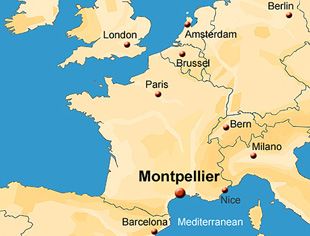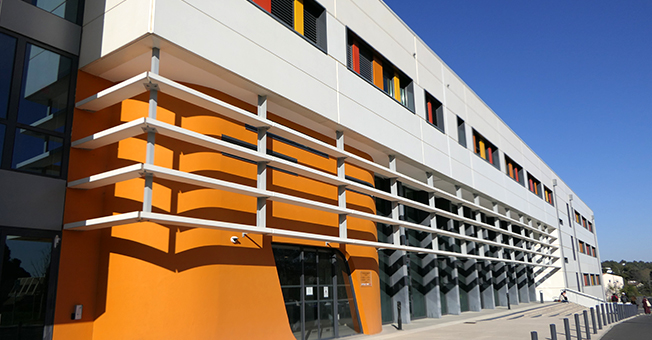In France, Montpellier your Host City
|
Montpellier has been a scholarly city for almost a millenium. Bracketed by the Mediterranean to the south, and garrigue-covered hills to the north, our city is home to roughly 70,000 university students, and dozens of research labs. With a strong history in the medical sciences, as well as agronomy and ecology, our university has recently been identified as a "university of excellence".The center of town, known as the "Ecusson", is a maze of ancient pedestrian-only streets, home to countless bars, cafes, shops, and restaurants. Landmarks include our conference venue, the botanical gardens, and one of the best preserved 13th century mikvahs in Europe.The surroundings are diverse, and rich with historical landmarks. Expansive beaches, lagoons, and the Rhone river delta are the prominent features to the south and east. Rivers carve limestone cliffs out of the plateaus to the north, home to several high quality, yet little known, vineyards. Neolithic humanity left several dolmens scattered throughout these hills. The ancient port village of Sète lies on the Canal du Midi, and Nîmes has the best-preserved Roman arena in the world, which was fed by the impressive aqueduct traversing the Pont du Gard. Vincent Van Gogh developed his unique style in nearby Arles. |
 |
LIRMM venue |
Conference venue, LIRMM
LIRMM was created in 1992, the result of the merger of the CRIM and LAM laboratories, under the leadership of the CNRS and the University of Montpellier . The project’s intent was to promote information science and technology within an integrated research unit. At the time, this type of research organization format was unique in France. Initially organized in four research departments (Knowledge Acquisition and Representation, Theoretical and Applied Informatics, Microelectronics, Robotics), the Lab combined its two Computer Science departments into one and created additional research teams in 2002. It also developed a partnership with INRIA. Within the last decade, new teams have been created or have joined the Lab.
Today, LIRMM’s three research departments comprise 22 research teams, among which 3 INRIA teams and one team from the University of Perpignan Via Domitia. The teams total 104 Full and Associate Professors from the University of Montpellier (UM), 8 from Paul Valery University in Montpellier (UPV), 6 from the University of Perpignan (UPVD), 41 CNRS Researchers and 11 from INRIA.
LIRMM has become an attractive research organization, which develops and manages collaborative projects around the world. Our staff includes more than 40 nationalities.
|
|
Pictures: © LIRMM



